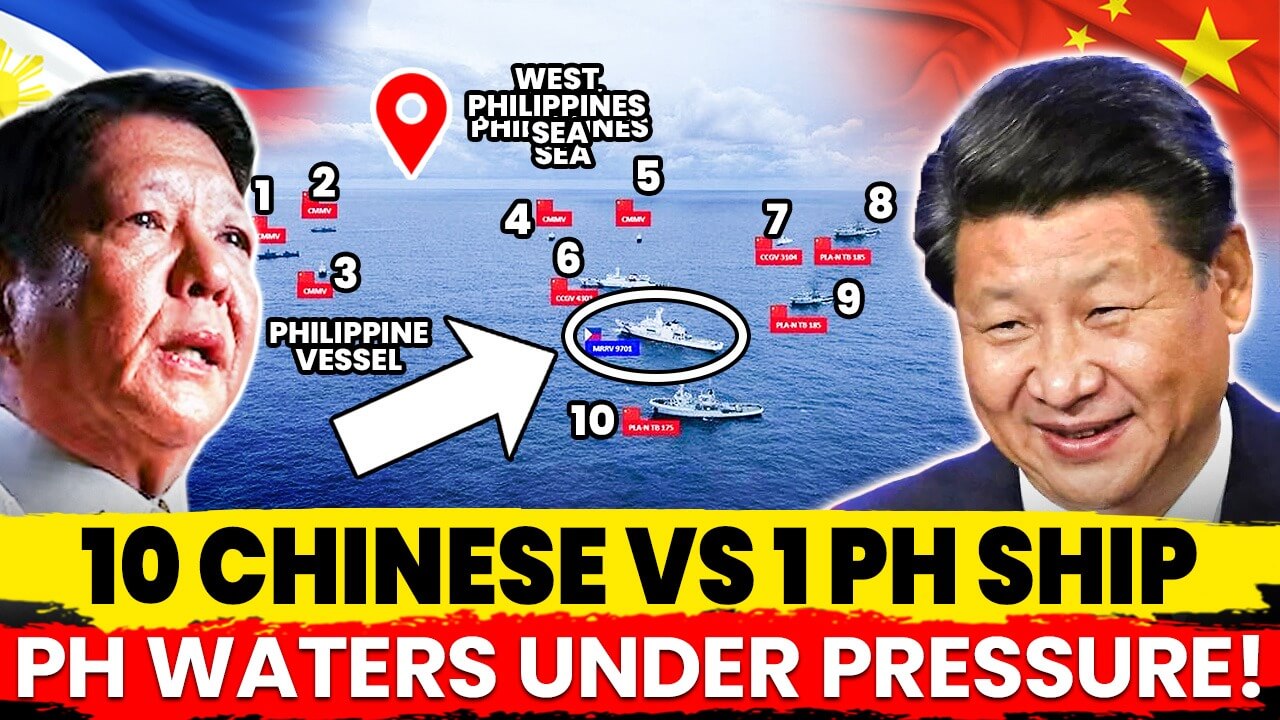Tensions between China and the Philippines flared once again following a maritime confrontation near the contested Scarborough Shoal in the South China Sea, further intensifying a long-standing territorial dispute. Both nations offered conflicting accounts of the incident, highlighting the fragile state of relations in one of the world’s most strategic waterways.
The Philippine government accused China of “aggressive actions” after Chinese coast guard vessels reportedly fired water cannons and sideswiped a Philippine fisheries bureau boat that was delivering supplies to Filipino fishermen. Video evidence released by Philippine officials showed a large Chinese vessel approaching the smaller Philippine boat before the collision and the use of water cannons. Philippine Coast Guard (PCG) spokesperson Jay Tarriela labeled the actions as “overkill,” stating that they endangered lives and disrupted legitimate Philippine maritime operations.
The United States condemned China’s actions, with U.S. Ambassador to Manila MaryKay Carlson describing them as “unlawful” and reaffirming the U.S.’s commitment to supporting allies in maintaining a free and open Pacific. The U.S. has increasingly voiced concerns over China’s aggressive maneuvers in the South China Sea, with this latest confrontation drawing swift international attention.
China, however, presented a different narrative. According to the Chinese Coast Guard, four Philippine ships “dangerously approached” its vessels, attempting to enter what Beijing considers its territorial waters around Scarborough Shoal, known in China as Huangyan Island. Coast Guard spokesperson Liu Dejun defended the actions of Chinese vessels as necessary to “exercise control” over what he described as provocative and unsafe maneuvers by the Philippine side.
Liu added that one Philippine vessel ignored repeated warnings, further escalating tensions. “We warn the Philippines to immediately stop infringement, provocation, and propaganda; otherwise, it will bear all consequences,” he said in a statement.
The confrontation comes on the heels of a November diplomatic dispute after China unilaterally declared baseline territorial waters around Scarborough Shoal. This week, Beijing submitted nautical charts to the United Nations reinforcing its claims, which the Philippines has rejected as “baseless” and “illegal.” Alexander Lopez, spokesperson for the Philippines’ National Maritime Council, reiterated the country’s sovereign claim to the area, calling China’s actions part of a broader pattern of aggression, coercion, and intimidation.
“The aggressive posture of Chinese vessels highlights a continuing pattern of disregard for Philippine sovereignty and international law,” Lopez stated during a press briefing. He urged China to exercise self-restraint and respect the 2016 arbitral ruling that invalidated Beijing’s expansive claims under the United Nations Convention on the Law of the Sea (UNCLOS).
Scarborough Shoal has been a flashpoint for years. Although the arbitral tribunal ruled in 2016 that the area is a traditional fishing ground open to multiple nationalities, China has maintained a near-constant presence there, effectively blocking access to Philippine vessels. Tensions escalated further in recent months as Beijing ramped up its activities, including submitting maps that the Philippines insists infringe on its exclusive economic zone.
Philippine President Ferdinand Marcos Jr. recently signed two new maritime laws aimed at strengthening the country’s territorial integrity. The Maritime Zones Act and the Archipelagic Sea Lanes Act define the nation’s maritime zones and sea lanes more clearly, a move Beijing has called a provocation. In response, China summoned the Philippine ambassador to Beijing and warned that it would take “necessary measures” to protect its territorial sovereignty.
China claims nearly the entire South China Sea, a vital maritime route facilitating over $3 trillion in annual trade, with overlapping claims from Brunei, Indonesia, Malaysia, the Philippines, and Vietnam. Despite years of negotiations on a code of conduct for the waterway between China and the Association of Southeast Asian Nations (ASEAN), disputes persist, with some ASEAN members insisting the code must adhere to UNCLOS principles.
While Beijing asserts that its baseline submissions to the UN are consistent with international law, the Philippines and other claimants have dismissed them as lacking legal merit. “This is not a legitimate exercise of maritime rights but a blatant attempt to expand control,” Lopez said.
The ongoing dispute raises concerns about broader regional stability. The U.S.-Philippines Mutual Defense Treaty, dating back to 1951, could potentially draw Washington into any armed conflict in the South China Sea. Meanwhile, ASEAN nations continue to navigate a delicate balance between maintaining security ties with the U.S. and avoiding provocation with China, a dominant economic power in the region.
This latest confrontation highlights the growing risk of miscalculation in the South China Sea, where competing claims and aggressive posturing by China have created a volatile environment. As diplomatic efforts struggle to keep pace with the rapid escalation of maritime tensions, the future of peace and stability in the region remains uncertain.
Russian Submarine Enters Philippines Exclusive Economic zone(EEZ)



